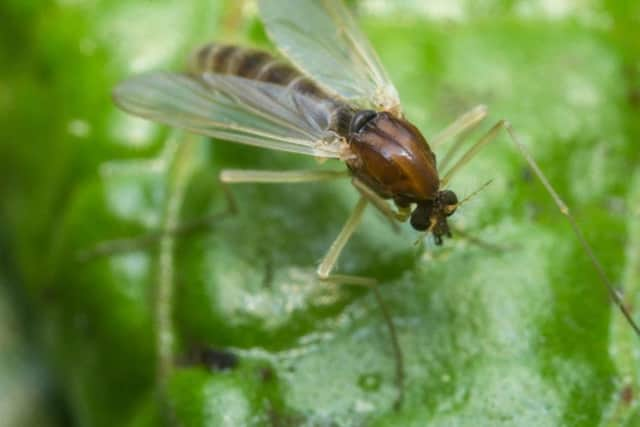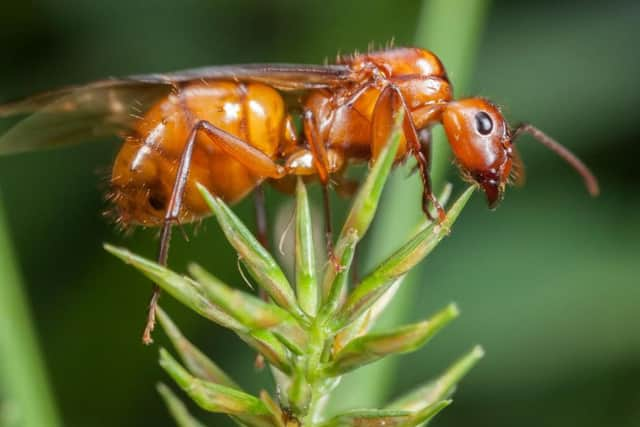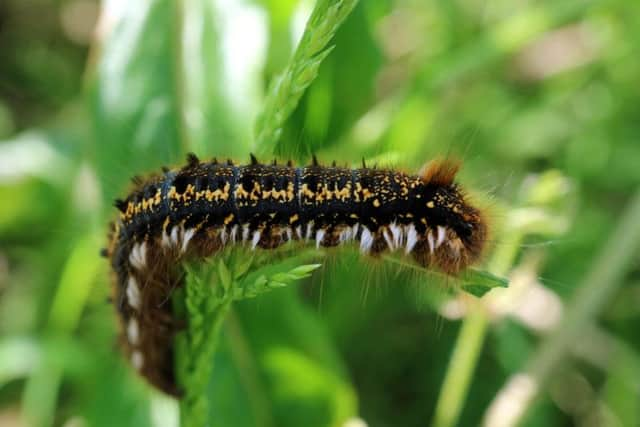Blood-sucking flies to toxic caterpillars: the insects set to swarm England this summer
and live on Freeview channel 276
They can be a nuisance for many and this year will see a variety of different species swarm the country, so make sure to get your bug spray at the ready.
Here are the insects which could potentially swarm England in the coming months.
Advertisement
Hide AdAdvertisement
Hide Ad

The UK is set for the biggest invasion of flying ants this summer, with this particular insect set to rise by 150% in just two months.
It is believed that as many as 50 billion flying ants will be buzzing across the country and this unusual influx could be related to the recent warm weather, which is unusual for this time of year.
A spokesperson for Rentokil pest controllers said: "Experts believe the rise could be attributed to the unseasonably warm start to the Spring - after Brits experienced record-breaking warm weather in April”.
Advertisement
Hide AdAdvertisement
Hide AdIt is also believed that this unusual warm weather means that National Flying Ant Day, an annual day which marks male and female ants sprouting wings and embarking on a "nuptial flight" seeking ants from other colonies to mate with, will be earlier this year.


Every year, huge flying ants appear on the same day in different locations in the UK, typically occurring in July, but this year’s unseasonably warm weather means they could arrive this month.
Although the ants are harmless, and are unlikely to bite anyone, they may hang around for a number of weeks.
The Blandford Fly
Swarms of blood-sucking flies which can leave people with huge blisters and a fever from one single bite, are set to cause havoc this summer.
Advertisement
Hide AdAdvertisement
Hide Ad

The Blandford fly thrives in warm weather and NHS England have warned people to be on alert for this blood-sucking Blandford insect.
The fly bites can potentially leave victims seriously ill, with extreme reactions resulting in swelling, a fever and blistering.
You should seek medical advice if you have swelling or red lines in the groin or armpit area, a fever, or spreading redness or hotness around the bite, this lasting longer than three days.
If you get bitten, you should clean the bite area and dry gently, but avoid scratching the bite as this could lead to infection.
Advertisement
Hide AdAdvertisement
Hide AdGnats thrive in warmer conditions and are a staple of an English summer garden. They are attracted to numerous things, including poor quality soil around house plants, damp areas in the home, such as sinks and damp clothes, open piles of rubbish, dirty dishes, fruit and alcohol.
You can prevent gnats from swarming around you by cleaning up your dishes, ensuring any bins are covered, avoid leaving pools of water or full watering cans as gnats are attracted to damp areas, and changing your soil to a higher quality type.
Deadly Asian Hornets
Fears deadly Asian hornets are heading to the country were sparked when a man saw a swarm in the West Country in May.
Advertisement
Hide AdAdvertisement
Hide AdAsian hornets look similar to native European hornets but with darker colouring, their bodies are dark brown or black and bordered with a yellow band, whilst their abdomens have one band across them.
Queens grow up to 3cm in length and workers grow up to 2.5cm.
Toxic Caterpillar
After an increase in the number of toxic moth caterpillars seen in London and south-east England over recent months, it’s possible that they are beginning to spread.
According to the Forestry Commission, the larvae of oak processionary moths (OPM) are covered in long hairs which can cause skin and eye irritations, rashes, sore throats and breathing difficulties.
Advertisement
Hide AdAdvertisement
Hide AdThese caterpillars are usually found in and around oak trees in late spring and early summer, and people are warned not to touch these caterpillars. The Forestry Commission explain that if a person or animal has had an allergic reaction or has been seriously affected by contact with the larvae they should contact a doctor or vet.
Pharmacists can also offer relief for skin or eye irritations.
Giant moths
Moths are beginning to suspend hibernation and head out to look for a mate, with extra-large moths recently invading homes across the north of England.
Wildlife experts insist moths are completely harmless to humans and can be safely shooed out of your home if one happens to get stuck indoors.